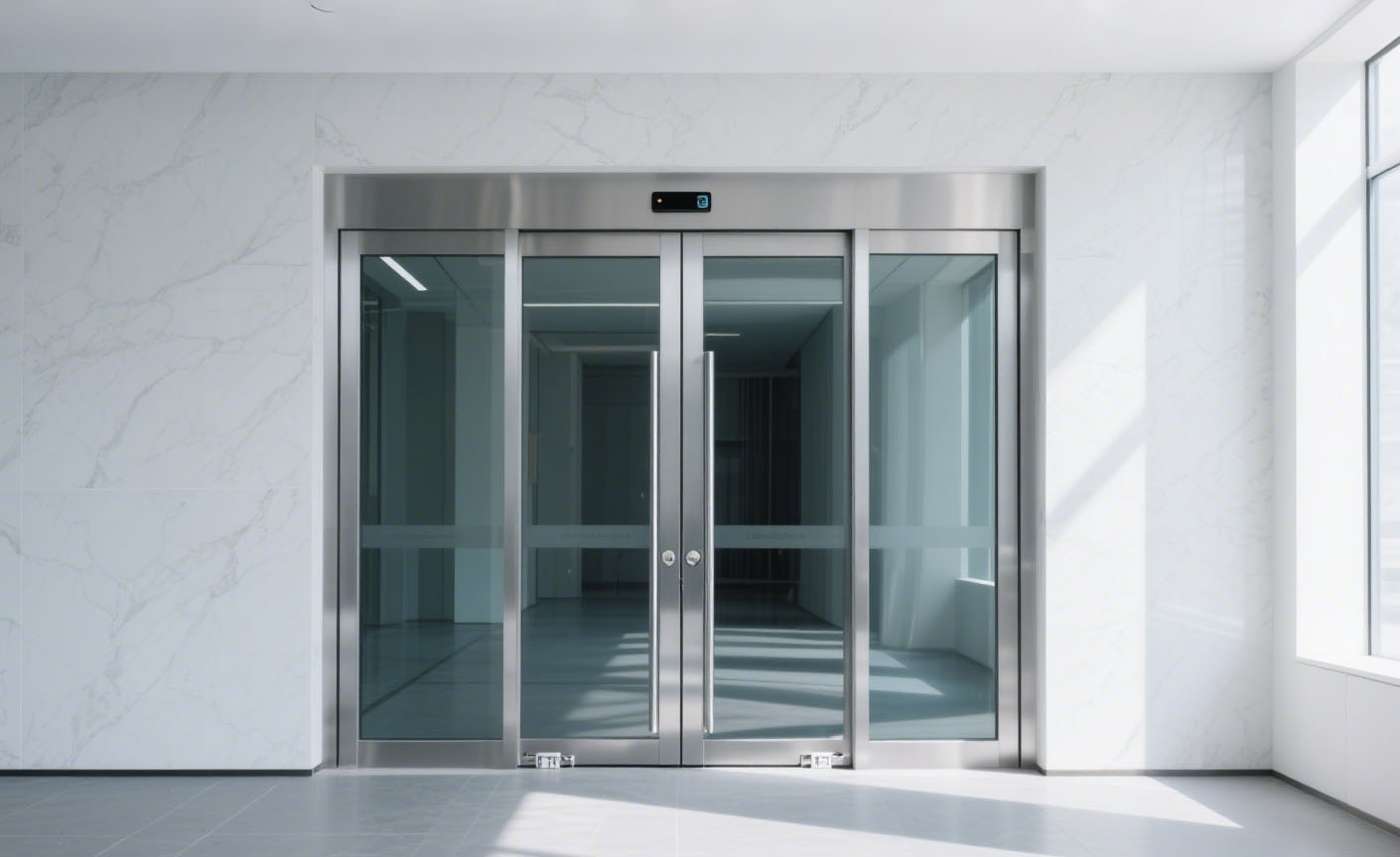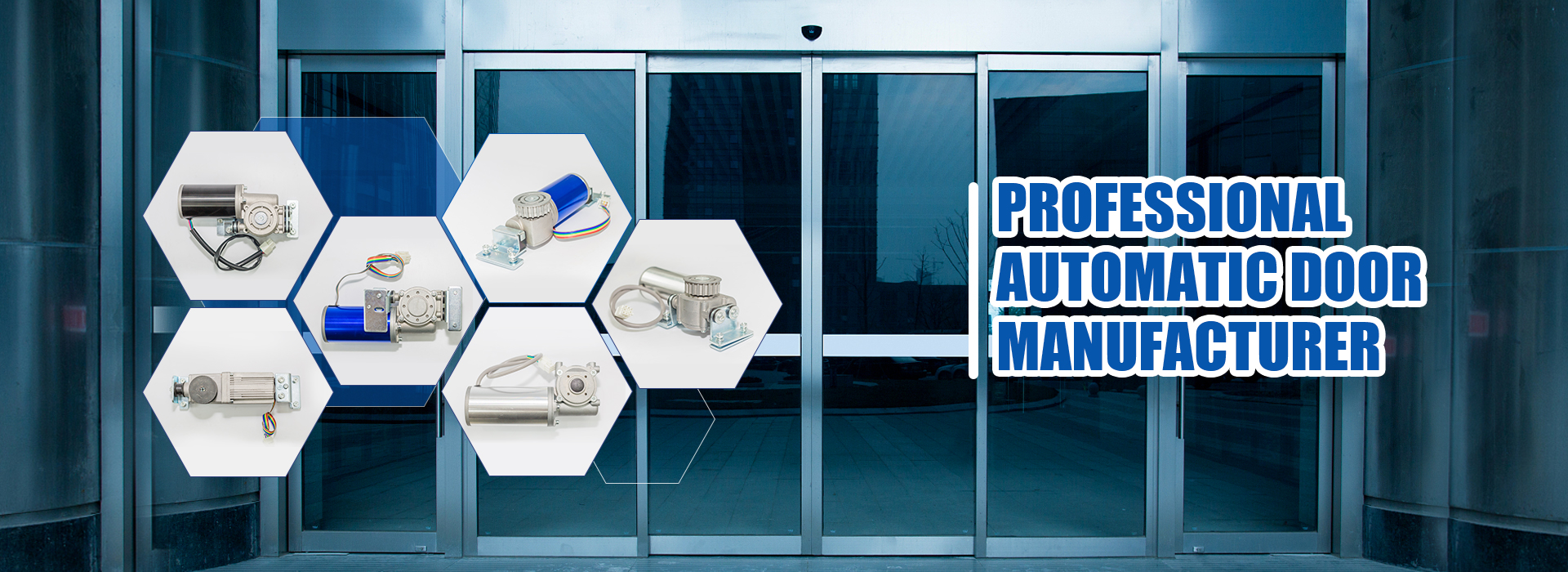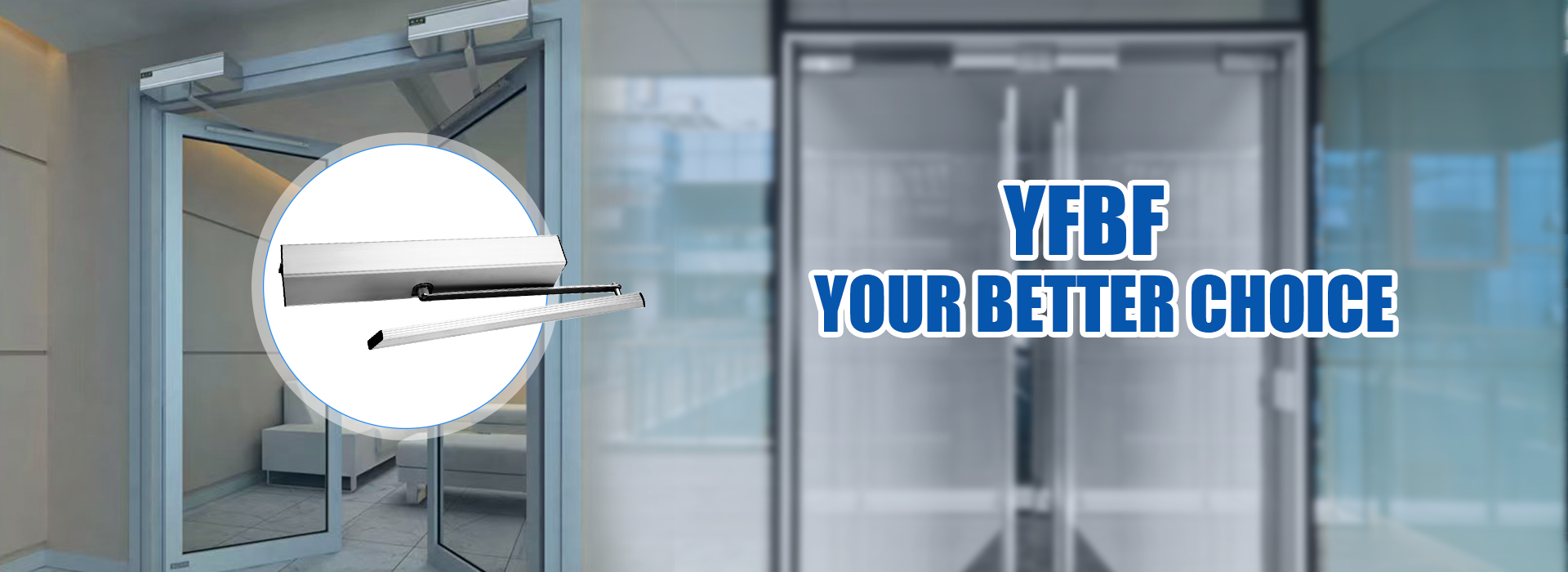
Automatic sliding door operators enhance safety through various mechanisms. These mechanisms protect users and prevent accidents. They include sensor systems, safety beams, and emergency features. Each component works together to create a secure environment. Users can trust these doors to operate safely and efficiently.
Key Takeaways
- Automatic sliding doors use advanced sensor systems to detect people and objects, ensuring safe operation and preventing accidents.
- Regular maintenance and inspections are crucial for automatic sliding doors. They help identify issues early and ensure compliance with safety standards.
- Emergency stop functions, including manual buttons and automatic shutdown features, empower users to halt door movement quickly during emergencies.
Sensor Systems
Automatic sliding door operators utilize advanced sensor systems to enhance safety and efficiency. These systems detect the presence of individuals or objects, ensuring that doors operate smoothly without causing harm. The main types of sensors include motion sensors, presence sensors, and safety edge sensors.
Motion Sensors
Motion sensors play a crucial role in the operation of automatic sliding doors. They activate when they detect moving objects within their range. Typically, these sensors have a maximum detection range of 4 meters wide and 2 meters high. This range allows them to effectively monitor a large area in front of the door.
- Motion sensors primarily respond to moving objects. They do not detect stationary items, which can be a limitation in certain scenarios.
- Recent advancements in technology have led to the development of motion/presence infrared sensors. These sensors combine the features of both motion and presence detection, enhancing their effectiveness.
Presence Sensors
Presence sensors significantly contribute to reducing the risk of door-related injuries. They ensure that automatic doors only operate when it is safe to do so. These sensors continuously monitor the area around the door, pausing operation if they detect an individual or object nearby.
- Presence sensors can detect both moving and stationary persons and objects. This capability is vital for preventing accidents.
- Testing has shown that improper adjustments to these sensors can lead to accidents. Therefore, they are essential in ensuring that doors do not close on individuals. They can be set to detect individuals in the threshold area, keeping the doors open until the area is clear.
Safety Edge Sensors
Safety edge sensors provide an additional layer of protection for users. These sensors are typically installed along the edges of the door. They detect any obstruction in the door’s path and trigger an immediate reversal of the door’s movement. This feature prevents potential injuries caused by the door closing on a person or object.
- Safety edge sensors work in conjunction with other sensor systems to create a comprehensive safety network.
- The integration of AI algorithms enhances these sensors, allowing them to distinguish between humans, objects, and animals. This leads to more precise and context-aware operations of automatic doors.
Safety Beams

Automatic sliding door operators often use safety beams to enhance user protection. These beams detect obstacles in the door’s path, preventing accidents. Two common types of safety beams are infrared safety beams and light curtains.
Infrared Safety Beams
Infrared safety beams are effective in detecting obstructions. They create a straight light path between an emitter and a receiver. If an object interrupts this path, the sensor detects it and prevents the door from closing. This functionality significantly enhances safety. Infrared safety beams work similarly to photoelectric sensors, which also aim to prevent accidents.
- These safety beams are essential for accident prevention. They detect individuals in the door’s threshold area, ensuring that doors do not close on people.
- Compliance with safety regulations, such as those from the AAADM, is crucial for ensuring the safe operation of automatic doors.
Light Curtains
Light curtains serve as another vital safety mechanism. They consist of multiple light beams arranged vertically. When an object crosses any of these beams, the system immediately stops the door’s movement.
- The response time of light curtains typically ranges between 20 and 50 milliseconds. In some cases, it can be as low as 5 milliseconds. This quick response helps prevent injuries effectively.
- Light curtains provide a broader detection area compared to single beam systems, making them ideal for high-traffic environments.
By integrating these safety beams, automatic sliding door operators create a safer environment for users.
Emergency Stop Functions
Automatic sliding door operators incorporate emergency stop functions to enhance user safety. These functions allow for immediate cessation of door movement during emergencies. They play a vital role in preventing injuries and ensuring a safe environment. Two primary components of emergency stop functions are manual stop buttons and automatic shutdown features.
Manual Stop Buttons
Manual stop buttons provide users with direct control over the door’s operation. When pressed, these buttons immediately halt the door’s movement. This feature is crucial during emergencies, as it allows individuals to react quickly to potential hazards.
- Accessibility: Manual stop buttons should be easily accessible. They must be positioned at a height and location that all users can reach comfortably.
- Visibility: Bright colors and clear signage help users identify these buttons quickly. This visibility is essential in high-traffic areas where quick action may be necessary.
- User Training: Educating users about the location and function of manual stop buttons enhances safety. Regular training sessions can ensure that everyone knows how to use these buttons effectively.
The presence of well-designed manual stop buttons significantly improves the overall safety record of automatic sliding door systems. They empower users to take immediate action, preventing potential injuries.
Automatic Shutdown Features
Automatic shutdown features serve as an additional layer of safety. These features activate under specific conditions, ensuring that the door ceases operation when necessary.
- Obstacle Detection: Many automatic sliding door operators include sensors that detect obstacles in the door’s path. If an obstruction is detected, the system automatically stops the door’s movement. This function prevents accidents and protects users from harm.
- Emergency Situations: In cases of power failure or system malfunctions, automatic shutdown features engage to prevent the door from operating unexpectedly. This precaution helps avoid injuries that could occur if the door were to close suddenly.
- Regular Testing: Routine checks of automatic shutdown features ensure they function correctly. Maintenance teams should regularly test these systems to confirm their reliability.
Incorporating both manual stop buttons and automatic shutdown features creates a comprehensive safety network. Together, they enhance the effectiveness of automatic sliding door operators, ensuring user safety during emergencies.
Compliance with Safety Standards
Automatic sliding door operators must comply with various safety standards to ensure user protection. These standards guide manufacturers in designing safe and reliable systems. Compliance with industry regulations is essential for maintaining safety and functionality.
Industry Regulations
Several key regulations govern the design and operation of automatic sliding doors. These regulations ensure that doors meet safety requirements and function correctly. Here are some important regulations:
| Regulation | Requirement |
|---|---|
| ANSI/BHMA A156.10 | Mandates break out/break away capability for emergency egress. |
| NFPA 101 (2024) | Requires doors to swing open manually in emergencies, with specific force limitations. |
| IBC (2024) | Requires power-operated doors to swing in the direction of egress during emergencies, without exceptions for certain occupant loads. |
These regulations influence the design of safety mechanisms in automatic sliding door operators. For instance, ANSI A156.10 requires the use of presence sensors to prevent doors from closing when a person is in the activation area.
Certification Processes
Certification processes play a crucial role in ensuring safety compliance. The American Association of Automatic Door Manufacturers (AAADM) administers a certification program for automatic door inspectors. These inspectors verify that doors meet safety standards and operate correctly.
- AAADM-certified inspectors conduct daily safety checks. They verify the functionality of sensors and ensure the area is free of obstacles.
- Annual inspections by certified professionals are essential for maintaining safety and compliance.
By adhering to these certification processes, manufacturers and operators can ensure that automatic sliding door operators remain safe for public use.
User Safety Features
Automatic sliding door operators incorporate several user safety features to enhance protection and prevent accidents. Two key features include slow start and stop mechanisms, as well as warning signals.
Slow Start and Stop Mechanisms
Slow start and stop mechanisms significantly improve safety by controlling the speed of door movement. These features reduce the risk of injury, especially in sensitive environments.
- Slow Speed Mode: This mode decreases the door’s movement speed, allowing users to pass through safely. It is particularly beneficial in areas with high foot traffic or where individuals may require extra time to navigate.
- Soft Start and Stop: This feature ensures smooth operation. It minimizes sudden movements that could cause injury. By gradually accelerating and decelerating, the door provides a more predictable experience for users.
Warning Signals
Warning signals play a crucial role in alerting users about the door’s operation. These signals help prevent accidental collisions and ensure safe passage.
| Requirement Description | Specifications |
|---|---|
| Signage for low-energy operators | Must read ‘AUTOMATIC CAUTION DOOR’ with black letters on a yellow background, minimum 6 inches in diameter. |
| Signage for knowing-act switch | Must read ‘ACTIVATE SWITCH TO OPERATE’ with white letters on a blue background. |
| Emergency signage for sliding doors | Must read ‘IN EMERGENCY PUSH TO OPEN’ with red background and minimum 1 inch high letters. |
Visual and audible alerts warn users when the door is about to open or close. These signals are essential for maintaining awareness and preventing accidents. Daily safety inspections can identify any adjustments needed to ensure these features function correctly. Such preventative maintenance can greatly reduce the incidence of injuries.
By integrating these user safety features, automatic sliding door operators create a safer environment for everyone.
Maintenance Practices
Regular maintenance of automatic sliding door operators is essential for ensuring safety and functionality. Routine inspections help identify potential issues before they escalate.
Regular Inspections
Regular inspections should occur based on the traffic level in the area. The following table outlines the recommended maintenance frequency:
| Traffic Level | Maintenance Frequency |
|---|---|
| High-traffic areas | Quarterly service |
| Medium-traffic areas | Semi-annual service |
| Low-traffic areas | Annual inspection (minimum) |
During these inspections, technicians should check for common issues. Some frequent problems include:
- Sensor Misalignment: This can lead to doors not opening or closing properly.
- Dirt or Debris on Sensors: Obstructions can delay sensor responses.
- Blocked Pathways: Small objects may confuse sensors.
- Faulty or Damaged Wiring: Disrupts communication, leading to failures.
Troubleshooting Common Issues
When issues arise, troubleshooting can help restore proper function. Here are some recommended steps:
- If the automatic door does not move:
- Adjust the voltage to a suitable level.
- Inspect wires and terminals for poor contact.
- For abnormal door movement:
- Clean the sensor housing if dirty.
- Check the installation environment for sudden changes.
- If the door opens or closes unexpectedly:
- Remove any moving objects in the detection area.
- Ensure no water droplets are on the sensor mask.
- Fix any vibrations on the installation surface.
- Adjust the sensor angle to avoid overlap with the door body.
- If the sensor light is not on:
- Check for poor contact; repair or replace the sensor if necessary.
- If the sensor light is always on:
- Reduce the sensitivity of the sensor.
- Remove any foreign objects within the sensing range.
- If the sensor is not sensitive enough:
- Increase the sensitivity setting.
- Adjust the sensor angle to expand the sensing range.
By following these maintenance practices, operators can ensure the safety and reliability of automatic sliding doors. Regular checks and prompt troubleshooting help prevent accidents and enhance user experience.
The safety mechanisms in automatic sliding door operators play a vital role in protecting users. Regular maintenance helps identify and fix safety hazards, ensuring smooth operation. Compliance with safety standards is essential for preventing accidents. Together, these practices significantly enhance user safety and contribute to the efficient functioning of automatic sliding doors.
FAQ
What are the main safety mechanisms in automatic sliding doors?
Automatic sliding doors use sensor systems, safety beams, emergency stop functions, and user safety features to ensure safe operation.
How often should automatic sliding doors be inspected?
Inspect automatic sliding doors regularly based on traffic levels: quarterly for high traffic, semi-annually for medium, and annually for low traffic.
What should I do if my automatic sliding door malfunctions?
If a malfunction occurs, check for sensor misalignment, dirt, or debris. Consult a technician for repairs if issues persist.
Post time: Sep-23-2025



